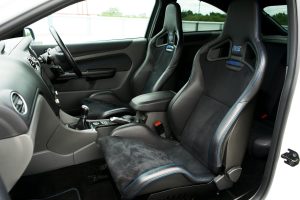Emergency Braking Systems: What’s Standard in 2025 Cars
Welcome to the world of car technology, where innovation is always pushing the boundaries. With the advancement in safety features, cars have become much safer than before. One such feature that has been gaining a lot of traction is Emergency Braking Systems, also known as Automatic Emergency Braking (AEB) systems. These systems have proven to be lifesaving in many situations and are quickly becoming a standard in cars. In this article, we will discuss the standard Emergency Braking Systems that will be present in cars in 2025.
The Importance of Emergency Braking Systems
Car accidents are a major cause of death worldwide. In the US alone, there were over 36,000 car accident fatalities in 2019. In many cases, these accidents occur due to human error, such as distracted driving or delayed reaction time. This is where Emergency Braking Systems come into play. They are designed to assist drivers in avoiding or reducing the impact of accidents by automatically applying the brakes in certain situations.
The Evolution of Emergency Braking Systems
The concept of automatically braking a car in an emergency situation is not new. Anti-lock Braking Systems (ABS) have been around since the 1970s. These systems prevent the wheels from locking up during hard braking, allowing the driver to maintain control of the vehicle. However, ABS only helps in maintaining control of the car, whereas Emergency Braking Systems actively intervene to avoid collisions.
The first iteration of AEB systems was introduced in 2006 and was only available in high-end luxury cars. As the technology improved, more car manufacturers started offering AEB as an optional feature. In 2013, AEB systems became a standard feature in many luxury cars and were also offered as an option in mid-range vehicles. Today, many car manufacturers provide AEB as a standard feature in their latest models.
The Standard Features of Emergency Braking Systems
Forward Collision Warning (FCW)
FCW is the most basic feature of Emergency Braking Systems. It uses sensors, such as radar or cameras, to scan the road ahead and detect potential collisions. If the system detects a possible collision, it will alert the driver through visual and audible warnings. This gives the driver time to react and take the necessary actions to avoid the collision.
Automatic Emergency Braking (AEB)
AEB takes FCW a step further by automatically applying the brakes if the driver fails to react in time. The system activates when it senses an imminent collision and applies the brakes to either stop the car or reduce its speed. This feature can also detect pedestrians, cyclists, and other cars, making it a crucial component of AEB systems.
Pedestrian Detection
Pedestrian detection is a subset of AEB and focuses on detecting and avoiding collisions with pedestrians. Pedestrian detection systems use advanced sensors and cameras to monitor the surroundings of the car. If a pedestrian is detected, the system will alert the driver and apply the brakes if necessary to avoid a collision.
City and Highway Speed AEB
City and Highway Speed AEB systems use different versions of AEB depending on the speed of the car. In urban areas, where speeds are usually lower, the system uses a lower level of braking force to avoid collisions. On the highway, where speeds are higher, the system applies stronger braking force to avoid collisions or reduce impact.
The Standard in 2025 Cars
It is not surprising that AEB systems will be a standard feature in 2025 cars. According to a report by the National Highway Traffic Safety Administration, AEB systems have the potential to prevent over 28,000 crashes and 12,000 injuries per year in the US alone. In fact, many car manufacturers have committed to making AEB a standard feature in all their new models by 2022.
As technology continues to improve, we can expect more advanced versions of AEB systems in 2025 cars. Features like improved pedestrian detection and emergency steering assist may become the new standard. Non-profit organizations like Euro NCAP and IIHS are also working to encourage car manufacturers to implement AEB systems on all their cars.
Conclusion
In conclusion, Emergency Braking Systems are a crucial safety feature that will become standard in 2025 cars. These advanced systems have already proven to save lives and reduce the number of car accidents. With the continuous improvement in technology, we can expect to see more advanced versions of AEB systems in the future, making cars even safer for drivers, passengers, and pedestrians alike.









